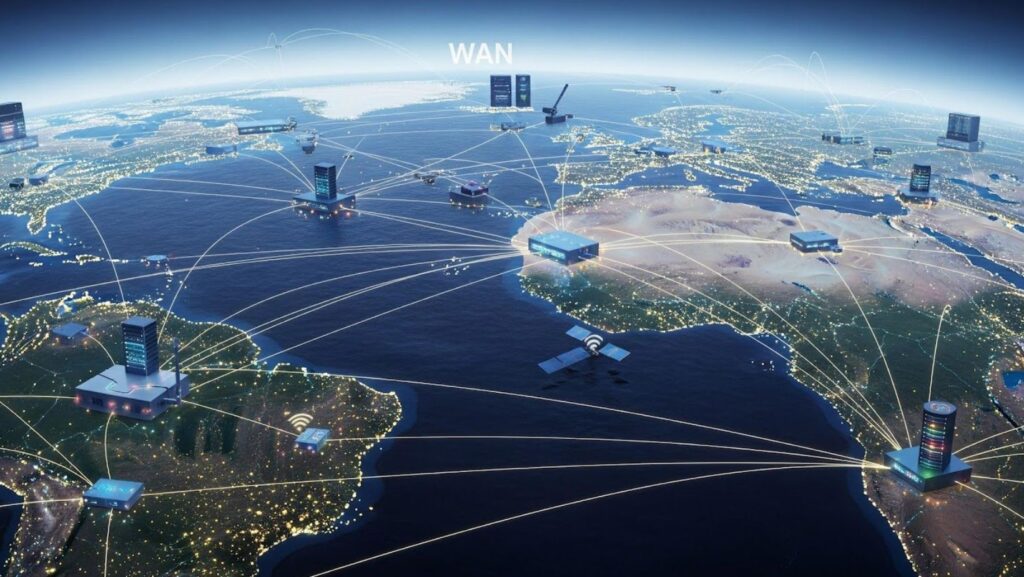
Every organization, from a three-person startup to a global enterprise, operates within a digital ecosystem. This ecosystem’s geography is defined by its networks. Two fundamental concepts structure this world: the Local Area Network (LAN) and the Wide Area Network (WAN). One creates a digital room where devices talk directly. The other builds the highways connecting those rooms across cities and continents. Understanding their distinct roles isn’t just technical jargon; it’s about architecting the flow of information that powers your entire operation.
Defining the Digital Room
A Local Area Network, or LAN, is an intimate, high-speed gathering of devices in a confined location. Think of a single office floor, a school, or your home. Here, computers, printers, and servers connect over a short distance, typically using Ethernet cables or Wi-Fi. Data on a LAN moves with remarkable speed and minimal delay because it doesn’t have far to travel. This network is your private space, owned and controlled entirely by you. It allows for rapid file sharing between colleagues, network printing, and hosting internal applications. The LAN is the foundation, the immediate digital environment where daily work happens.
Building the Inter-City Highway
If a LAN is a room, a Wide Area Network (WAN) is the sprawling infrastructure of motorways, bridges, and tunnels that links many such rooms together. A WAN connects multiple LANs across vast geographical distances. The internet itself is the ultimate public WAN. However, businesses often build private WANs using leased lines or encrypted tunnels (VPNs) over the public internet to securely join a branch office in London to a headquarters in New York. Performance across a WAN is subject to the physics of distance and the quality of the connections in between, which is why specialized providers like the Beeks Group focus on optimizing these long-distance data pathways for latency-sensitive industries.
The Core Difference: Geography and Control
Scope is the most obvious distinction. A LAN’s dominion is measured in meters, confined to a building or campus. A WAN’s reach is limitless, spanning cities, countries, or the entire globe. This geographical divide leads to a second critical difference: ownership. A company typically owns and manages all the hardware inside its LAN—the switches, routers, and access points. In contrast, a WAN relies heavily on infrastructure controlled by third-party telecommunications carriers. You lease the bandwidth and the lines; you do not own the undersea cables or the national fibre-optic backbone.
Performance and Speed Realities
Expectations for performance must differ drastically between the two. On a modern LAN, speeds of multiple gigabits per second are standard, with latency so low it’s nearly imperceptible. This is essential for tasks like transferring large video files to a local server or accessing a shared database within the same building. WAN connections, while improving, cannot match this raw speed. Their bandwidth is lower and latency is inherently higher due to the immense distances data must travel. A packet sent from New York to Tokyo will always take longer than one sent across the office.
Security Postures and Threats
Each network type faces unique security challenges. A LAN’s primary threat is often internal: an infected device, a malicious insider, or unauthorized physical access to a network port. Security here focuses on strong access controls, device authentication, and internal segmentation. A WAN, by its nature, exposes your data to the outside world. Its security model is built around fortifying the perimeter—using robust firewalls, encrypting all data in transit, and constantly monitoring for external intrusion attempts across those long, vulnerable links.
Choosing and Combining for Your Needs
For a single-location business, a well-designed LAN is all that’s required. But the moment you add a second office, enable remote work, or need to access cloud services, you are deploying a WAN. The modern enterprise doesn’t choose one over the other; it uses both in a symbiotic relationship.

The LAN provides the high-performance local environment, while the WAN seamlessly extends that environment to other locations and resources, creating a unified, cohesive digital workspace regardless of physical location.
Ultimately, the LAN and WAN are not competitors but complementary partners in your network architecture. One creates the productive, high-speed hubs of work. The other weaves those isolated hubs into a single, powerful, and globally connected organization. Understanding their separate roles is the first step to building a resilient and efficient digital nervous system for your business.












